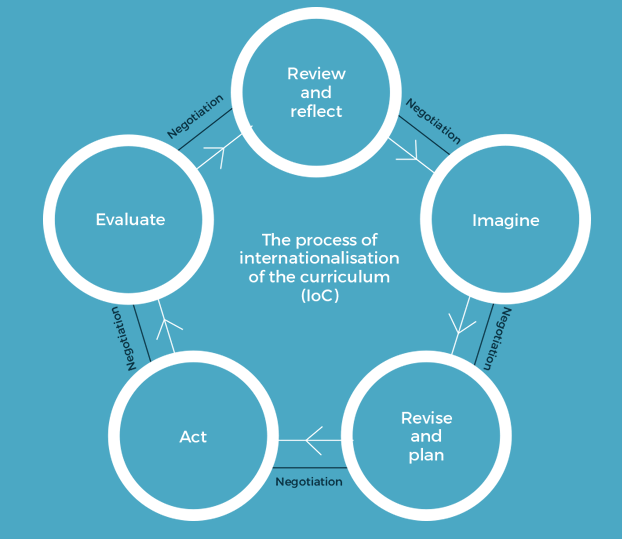The core work involved in internationalisation of the curriculum (IoC) as this relates to learning and teaching in the formal curriculum is best done by academic staff in disciplinary teams. Ideally IoC is undertaken as a project for a whole program of study or a major within a program.
It is critical to approach the task in a scholarly, systematic and collaborative way. Approaching internationalisation of the curriculum as an action research or curriculum design project affords more opportunities for the development of quality learning experiences and outcomes. This is best done collaboratively starting with the teaching team at course and/or program level, then moving outward involving other staff who support the development of learning environments and resources and students. Expanding the team makes it possible to harness the combined resources and perspectives of all to ensure coherence across the program and the systematic identification and development of appropriate knowledge, skills and attitudes in all students. It is important to get the right group of people together and an advantage if the group is culturally diverse.
Ideally, the approach to internationalisation of the curriculum will be utilised and/or be informed by the participatory action research and/or design thinking methodologies and philosophies. These approaches are:
Action research is a reflective and cyclical process of problem solving. When applied to internationalisation of the curriculum, the process involves the program team as a community of practice. Action research is practical in nature, focused on change, involves a cyclical process and is concerned with participation (Costello, 2003, p. 6). The purpose of the action research process is one of continuous quality improvement. Changes may occur whilst research is being conducted. When applied to internationalisation of the curriculum team members are actively engaged in reviewing rationales for internationalisation of the curriculum, related goals and performance and making changes which are then evaluated and further changes made. The cycle is repetitive and may be undertaken as part of the normal review process, or outside of that process.
Design thinking is a non-linear, iterative process that individuals or teams use to understand users, challenge assumptions, redefine problems and create innovative solutions to prototype and test. To learn more, click here [external link to https://www.interaction-design.org/literature/topics/design-thinking]. When applied to curriculum internationalisation, it starts with putting the student at heart of the process rather than the curriculum and/or pedagogy.
The five stages of the process of IoC emerged during extensive work with teams of academic staff across Australia. Possible focus questions and key activities associated with each stage were developed. The process can be led by an internal and/or an external facilitator. Most teams, in working through this process, have enlisted the support of an external facilitator in the early stages.
